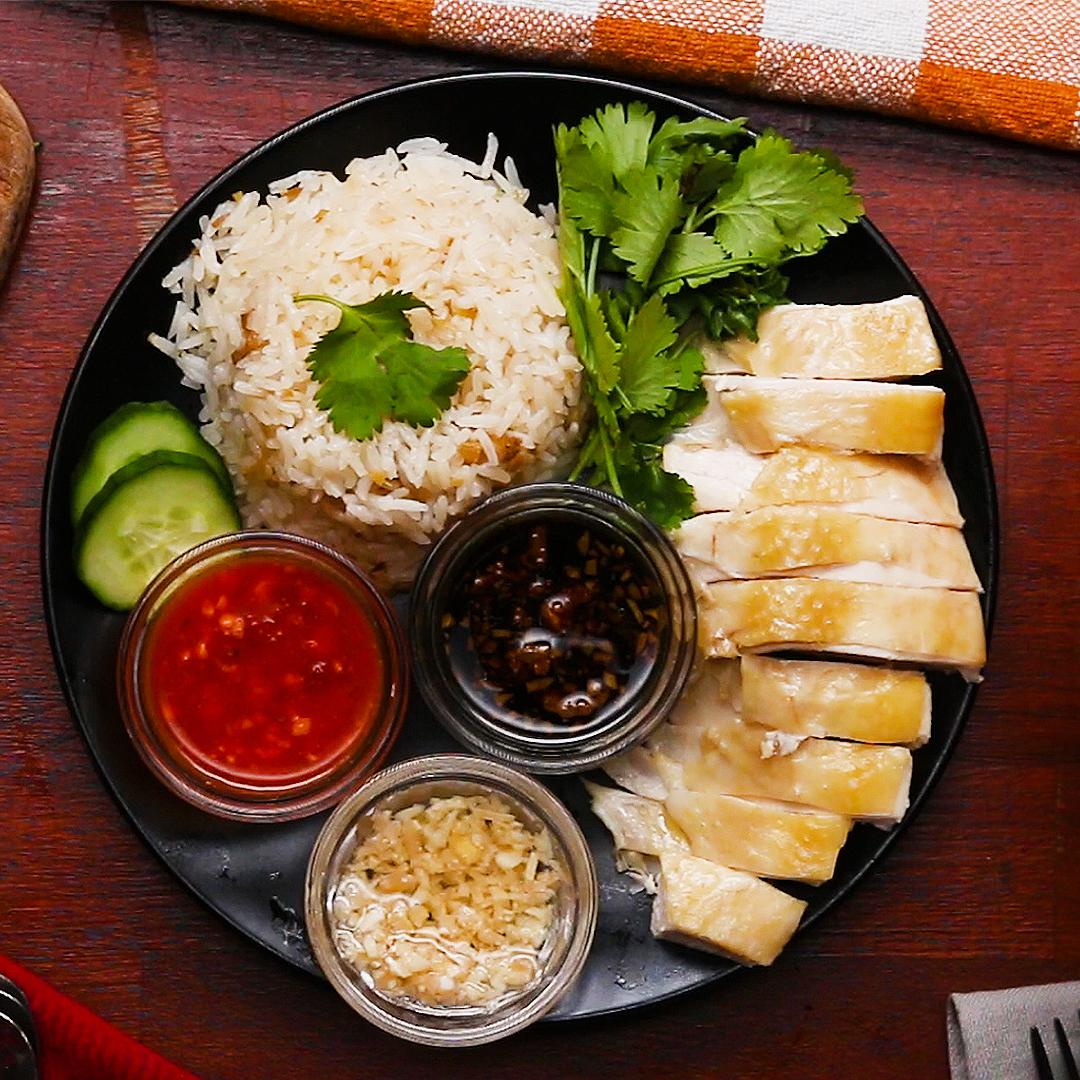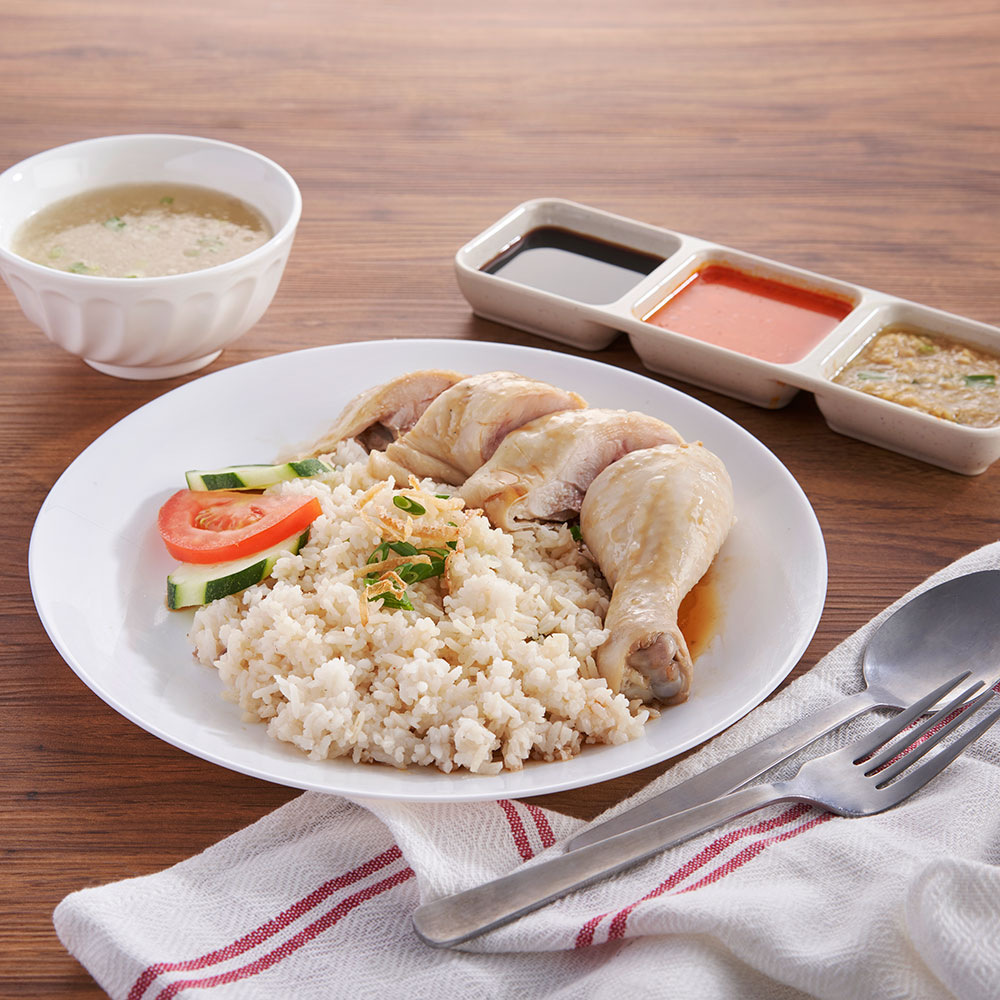Embark on a culinary adventure with our Hainanese chicken pie recipe, a beloved dish that has captured the hearts of Southeast Asian cuisine enthusiasts worldwide. This savory pie, boasting a flaky pastry crust and succulent chicken filling, is a symphony of flavors and textures that will tantalize your taste buds.
Rooted in the rich cultural heritage of Southeast Asia, Hainanese chicken pie has become a symbol of family gatherings, celebrations, and shared culinary traditions. Join us as we explore the history, ingredients, and step-by-step process of creating this iconic dish.
Introduction to Hainanese Chicken Pie
Hainanese chicken pie is a delectable dish that has captured the hearts and taste buds of Southeast Asian cuisine enthusiasts. Its origins can be traced back to the Hainanese immigrants who settled in the region during the 19th and early 20th centuries.
These immigrants brought with them their culinary traditions, including the art of making Hainanese chicken pie.
Over time, this dish has become a popular street food and comfort food, cherished for its unique blend of flavors and textures. It is often served at gatherings and celebrations, symbolizing unity and togetherness among family and friends.
Cultural Significance
Hainanese chicken pie holds a special place in Southeast Asian culture. It is considered a symbol of Hainanese heritage and identity. The dish is often prepared during important occasions, such as weddings, birthdays, and religious festivals. It is also a common dish served at family gatherings, where it brings people together and fosters a sense of community.
Step-by-Step Recipe
The creation of Hainanese chicken pie involves three key steps: preparing the chicken filling, making the pastry dough, and assembling and baking the pie. Let’s delve into each step with detailed instructions.
Preparing the Chicken Filling
Begin by seasoning the chicken with salt, pepper, and sesame oil. Mix well to ensure even distribution of flavors. Heat a pan over medium heat and add oil. Once the oil is shimmering, add the chicken and cook until golden brown on all sides.
Remove from heat and set aside.
Making the Pastry Dough
In a large bowl, combine flour, butter, and salt. Use your fingers to work the butter into the flour until it resembles coarse crumbs. Add water one tablespoon at a time, mixing until the dough just comes together. Form the dough into a ball, wrap it in plastic wrap, and chill for at least 30 minutes.
Assembling and Baking the Pie
Preheat the oven to 375°F (190°C). Roll out the dough on a lightly floured surface to a 12-inch (30 cm) circle. Transfer the dough to a 9-inch (23 cm) pie plate, trimming the edges. Fill the pie shell with the chicken filling.
Roll out the remaining dough to an 11-inch (28 cm) circle. Place the top crust over the filling and crimp the edges to seal. Brush the top crust with egg wash and bake for 45-50 minutes, or until the crust is golden brown and the filling is bubbling.
Variations and Adaptations
The Hainanese chicken pie, with its delectable flavors and versatile nature, has inspired culinary creativity across Southeast Asia, resulting in diverse variations that reflect local preferences and ingredients. Moreover, the recipe’s adaptability allows for innovative interpretations that cater to various dietary preferences and flavor profiles.
Regional Variations
In Singapore and Malaysia, the Hainanese chicken pie is often prepared with a flaky, buttery pastry crust, while in Thailand, it commonly features a thin, crispy filo dough. In Indonesia, the pie may incorporate fragrant spices like nutmeg and cloves, adding a warm, aromatic touch to the dish.
Additionally, the fillings can vary depending on regional tastes, with some versions including mushrooms, bamboo shoots, or even minced pork for a heartier variation.
Dietary Adaptations
For vegetarians, the chicken filling can be replaced with a medley of vegetables such as carrots, peas, corn, and bell peppers, ensuring a colorful and nutritious pie. Gluten-free alternatives to traditional wheat flour, such as almond flour or tapioca flour, can be used to create a crust that caters to individuals with gluten sensitivities or celiac disease.
Creative Adaptations
The Hainanese chicken pie serves as an excellent canvas for culinary experimentation. The flavors can be enhanced by incorporating herbs like rosemary or thyme, or by adding a touch of spice with chili flakes or paprika. Different types of cheese, such as cheddar or mozzarella, can be added to the filling for a rich, gooey texture.
Moreover, the pie can be baked in individual ramekins for a delightful presentation or even transformed into a savory hand pie, perfect for on-the-go snacking.
Serving Suggestions and Accompaniments

Hainanese chicken pie’s versatility allows it to be enjoyed in various settings and as part of different meal structures. Whether served as an appetizer, main course, or snack, it offers a delectable culinary experience.
As an appetizer, Hainanese chicken pie can tantalize taste buds and set the stage for a delightful meal. Its flaky crust and savory filling provide a delightful contrast in texture and flavor, leaving guests eagerly anticipating the main course.
Main Course
As a main course, Hainanese chicken pie stands as a hearty and satisfying dish. Accompanied by a side of steamed rice or mashed potatoes, it delivers a well-rounded meal that appeases both hunger and the desire for delectable flavors.
Snack
Hainanese chicken pie also shines as a delectable snack, perfect for satisfying midday cravings or as an afternoon treat. Its portability makes it an ideal companion for picnics, road trips, or simply enjoying at home.
Accompaniments
To further enhance the Hainanese chicken pie experience, consider pairing it with traditional accompaniments that complement its flavors.
- Chili Sauce: The spicy kick of chili sauce adds a vibrant layer of heat and depth to the pie’s savory filling.
- Pickled Vegetables: The tangy and crunchy texture of pickled vegetables, such as carrots, daikon, or cucumbers, provides a refreshing contrast to the pie’s richness.
- Fresh Herbs: Garnish the pie with fresh herbs like cilantro, parsley, or mint to add a burst of aromatic freshness and elevate its overall flavor profile.
When crafting a balanced and flavorful meal featuring Hainanese chicken pie, consider incorporating a variety of dishes to create a harmonious culinary experience.
- Soup: Begin the meal with a light and flavorful soup, such as wonton soup or egg drop soup, to cleanse the palate and prepare the taste buds for the main course.
- Salad: A fresh and crisp salad, such as a green salad with a tangy vinaigrette dressing, adds a refreshing element to the meal and helps balance the richness of the pie.
- Vegetables: Include a side of steamed or roasted vegetables, such as broccoli, carrots, or asparagus, to provide a healthy and colorful complement to the pie.
Cultural and Social Significance

Hainanese chicken pie transcends its culinary significance, embodying a deep cultural and social resonance within Southeast Asian communities. It is a dish that binds families, communities, and generations, serving as a symbol of unity, celebration, and shared culinary heritage.
A Culinary Thread Connecting Generations
The Hainanese chicken pie holds a special place in the hearts of many Southeast Asians. Its distinct flavors and comforting texture evoke memories of family gatherings, festive occasions, and cherished moments shared around the dining table. The preparation of the pie is often a collaborative effort, with family members coming together to contribute their skills and expertise.
This shared culinary experience strengthens family bonds and creates lasting memories.
A Symbol of Celebration and Unity
The Hainanese chicken pie is a ubiquitous presence at celebrations and festivals throughout Southeast Asia. Its appearance signals joy, abundance, and the coming together of loved ones. Whether it’s a wedding, a birthday, or a religious holiday, the pie takes center stage, symbolizing unity, prosperity, and the celebration of life’s milestones.
A Culinary Ambassador of Cultural Exchange
The Hainanese chicken pie has transcended its Southeast Asian origins, becoming a culinary ambassador that has found a home in various parts of the world. Its unique flavors and versatility have captured the attention of international audiences, leading to adaptations and interpretations that reflect the diverse culinary landscapes they now inhabit.
This global recognition speaks to the dish’s ability to bridge cultures and bring people together through the shared appreciation of good food.
Closing Summary
As you savor each bite of Hainanese chicken pie, let the harmonious blend of flavors and textures transport you to the bustling streets of Southeast Asia. Whether enjoyed as an appetizer, main course, or snack, this dish is sure to leave a lasting impression on your palate and soul.
Experiment with different variations and accompaniments to create your unique culinary masterpiece. Share your creations with loved ones, and let the Hainanese chicken pie become a cherished part of your culinary repertoire.
FAQ Section
What is the origin of Hainanese chicken pie?
Hainanese chicken pie traces its roots to the Hainanese community in Southeast Asia, particularly in countries like Singapore, Malaysia, and Thailand. It is believed to have originated as a street food and comfort food, gaining popularity for its delectable taste and convenience.
What are the key ingredients in Hainanese chicken pie?
The essential ingredients for Hainanese chicken pie include chicken, pastry dough, and various seasonings. The chicken is typically seasoned with soy sauce, oyster sauce, and sesame oil, while the pastry dough is made with flour, butter, and eggs. Additional ingredients like onions, carrots, and mushrooms are often added to enhance the flavor and texture.
How do I achieve a flaky and buttery pastry dough?
To achieve a flaky and buttery pastry dough, it is important to use cold butter and work it into the flour until it resembles coarse crumbs. Avoid overworking the dough, as this can result in a tough texture. Chilling the dough before baking also helps create flaky layers.
Can I make vegetarian or gluten-free variations of Hainanese chicken pie?
Absolutely! For a vegetarian version, you can substitute the chicken with tofu or vegetables like mushrooms or carrots. To make a gluten-free version, use gluten-free flour or a combination of almond flour and tapioca flour.
What are some traditional accompaniments for Hainanese chicken pie?
Traditional accompaniments for Hainanese chicken pie include chili sauce, pickled vegetables, and fresh herbs like cilantro or spring onions. These accompaniments add a delightful balance of flavors and textures to the dish.
